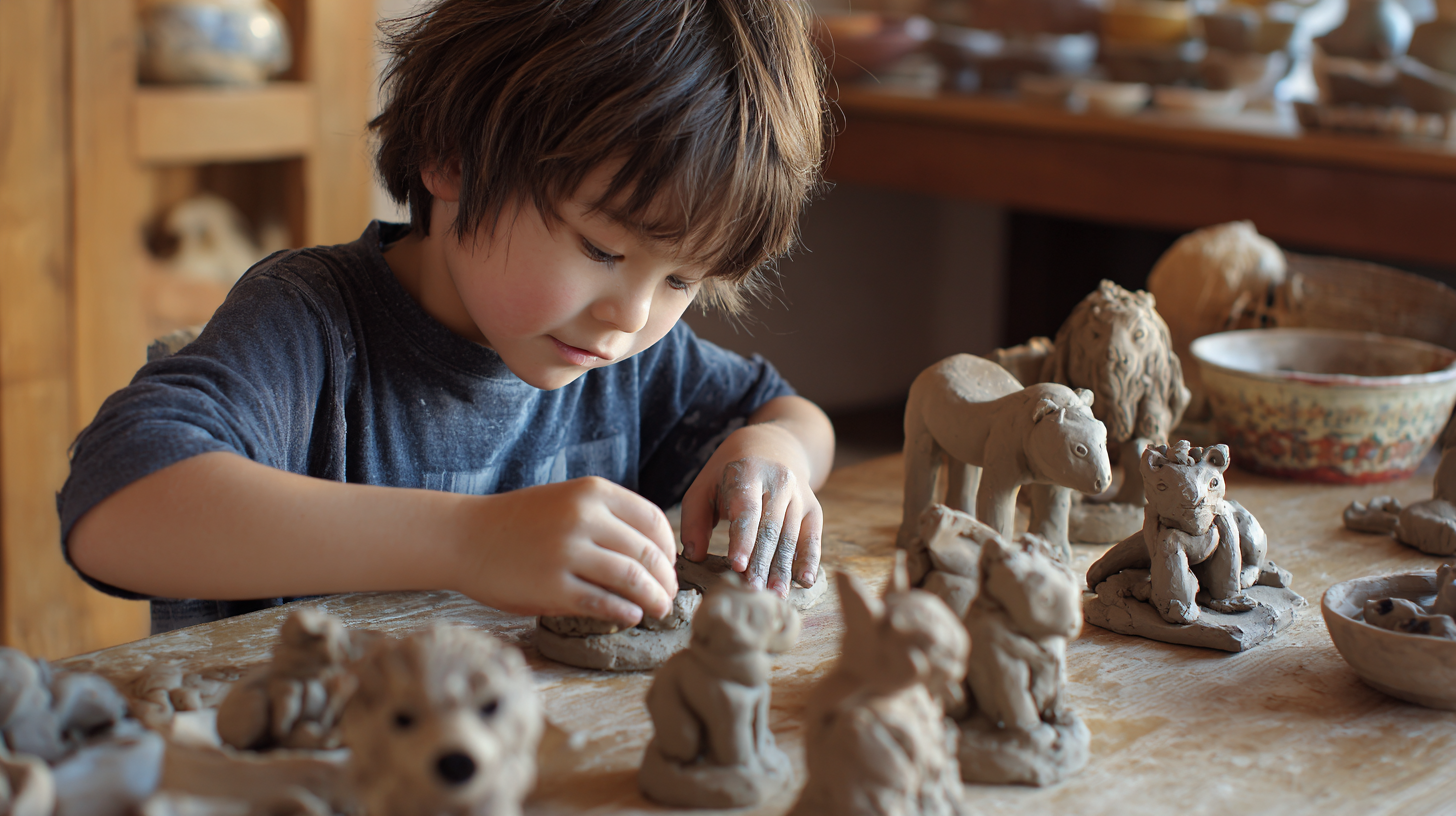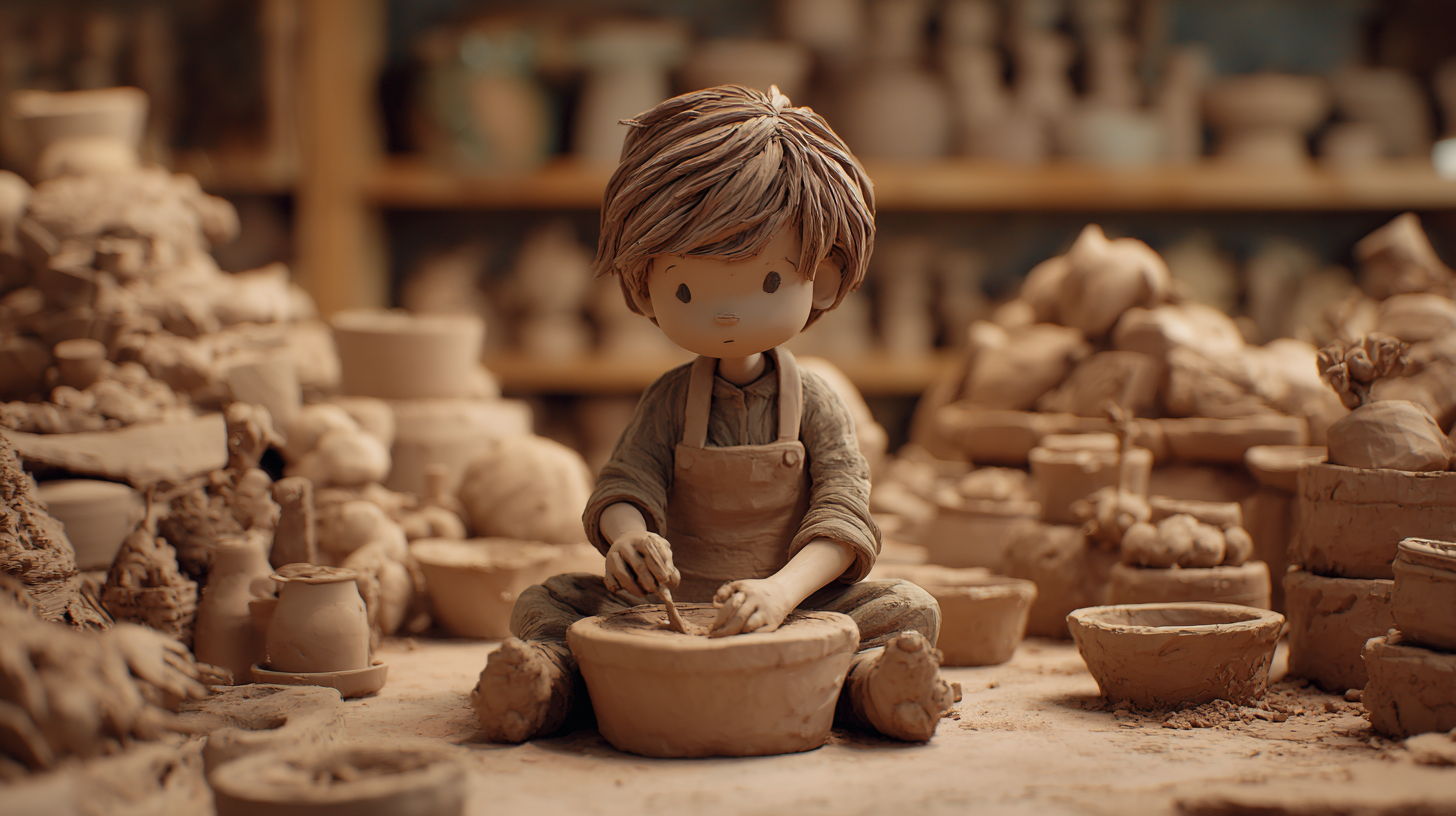Discover the Creative Benefits of Clay Toys for Child Development and Imagination
In today's fast-paced digital world, finding effective and engaging ways to promote child development can be a challenge. However, one invaluable resource remains timeless: Clay Toys. These versatile tools not only ignite the imagination but also offer a myriad of creative benefits that support various aspects of a child's growth. From enhancing fine motor skills to fostering social interactions and cognitive abilities, Clay Toys provide a hands-on experience that digital devices simply cannot replicate. As children mold and shape their ideas into tangible forms, they engage in a process of exploration and self-expression that nurtures their creativity. In this guide, we will delve into the numerous advantages of incorporating Clay Toys into playtime, offering practical tips for parents and guardians to harness their full potential in nurturing curious minds.
Exploring the Role of Clay Toys in Enhancing Fine Motor Skills in Children
Clay toys serve as an exceptional tool for enhancing fine motor skills in children. According to a report by the American Occupational Therapy Association, engaging in activities that require dexterity, such as molding and shaping clay, can significantly improve hand strength and coordination. These skills are crucial during the early developmental stages, as they lay the foundation for activities like writing, drawing, and using utensils. By manipulating clay, children not only refine their grip and finger movements but also enhance their cognitive abilities through sensory play.
Furthermore, studies have shown that children who regularly engage with tactile materials, including clay, experience improved focus and persistence in tasks. A study published by the Journal of Pediatric Therapy indicated that children who used clay-based activities demonstrated a 25% increase in fine motor proficiency compared to those who did not. The process of rolling, pinching, and sculpting clay challenges children to use various hand movements, which promotes neural connections in the brain. This multisensory experience not only stimulates creativity but also fosters critical thinking and problem-solving skills, making clay toys an invaluable asset in child development.
Understanding the Impact of Clay Play on Cognitive Development and Problem-Solving Abilities
Engaging children in clay play significantly enhances their cognitive development. As young minds mold and shape clay, they unknowingly practice critical thinking skills by visualizing their desired outcomes and experimenting with various techniques. This creative process encourages problem-solving, as children must navigate challenges such as balancing their creations or figuring out how to attach different components. Each trial and error aids in building their resilience and boosts their ability to think outside the box.
Moreover, working with clay fosters imaginative thinking. Children are not just crafting sculptures; they are also constructing narratives around their creations. This imaginative play enhances language skills as they describe their projects and share stories with peers or caregivers. The tactile experience of clay also stimulates sensory exploration, allowing children to engage their sense of touch while developing fine motor skills. In essence, clay play serves as a multifaceted tool that nurtures cognitive abilities and enriches imaginative expression in young children.
The Connection Between Clay Toys and Emotional Expression in Young Learners
 Clay toys play a significant role in fostering emotional expression among young learners. As children engage with malleable materials like clay, they are given the freedom to explore their feelings and thoughts creatively. Shaping, molding, and manipulating clay not only enhances their fine motor skills but also serves as a safe outlet for expressing emotions that they might not yet have the verbal skills to articulate. This hands-on activity encourages children to channel their inner experiences into tangible creations, allowing for an intimate connection between their feelings and their imaginative outputs.
Clay toys play a significant role in fostering emotional expression among young learners. As children engage with malleable materials like clay, they are given the freedom to explore their feelings and thoughts creatively. Shaping, molding, and manipulating clay not only enhances their fine motor skills but also serves as a safe outlet for expressing emotions that they might not yet have the verbal skills to articulate. This hands-on activity encourages children to channel their inner experiences into tangible creations, allowing for an intimate connection between their feelings and their imaginative outputs.
Moreover, the process of creating with clay can often mirror the emotional landscape of a child. For instance, when a child expresses frustration or joy while building a figure, they are learning to externalize these feelings through their artwork. This exploration of emotions helps in developing emotional intelligence and can be particularly beneficial during critical periods of social and emotional development. Furthermore, clay modeling often takes place in a collaborative setting, allowing children to share their creations with peers, thus fostering empathy and understanding as they appreciate each other's emotional expressions.
Analyzing Research on Imagination Boosts Through Creative Play with Clay
Engaging with clay toys offers a profound way to enhance children's imagination and creative thinking. Research has shown that when children mold and shape clay, they are not just playing; they are also developing crucial cognitive skills. This tactile experience enables them to express their thoughts visually, transforming abstract ideas into tangible forms. Such creative play with clay has been linked to increased problem-solving abilities, as children experiment with structure and design, learning to navigate challenges in a hands-on environment.
Tips for maximizing the benefits of clay play include encouraging open-ended exploration. Rather than providing strict instructions, allow children the freedom to create whatever their imaginations can conjure. This autonomy not only boosts their confidence but also fosters a sense of ownership over their creations. Another useful tip is creating themed clay sessions, where children can make characters or objects related to stories, enhancing their narrative skills while also stimulating their imagination through storytelling.
Finally, integrating clay play into collaborative projects can further enrich children's social skills. Working together with peers on a clay sculpture or a building design will help them learn to communicate their ideas effectively, negotiate roles, and appreciate the contributions of others. By prioritizing creativity with clay, we can nurture a generation of imaginative thinkers and skilled problem solvers.

How Clay Toys Facilitate Social Skills and Collaboration in Early Childhood Education
Clay toys play a vital role in fostering social skills and collaboration among young children. As children gather around clay play, they naturally engage in conversations, share tools, and work together to create unique models. This interactive play not only enhances their communication abilities but also encourages them to express their thoughts and ideas. Through this shared experience, children learn to negotiate roles, resolve conflicts, and provide feedback to one another, crucial skills that will serve them well in future social interactions.
Moreover, clay activities promote teamwork as children collaborate on group projects. They discover the importance of listening to each other's suggestions and incorporating diverse perspectives into their creations. This process teaches them empathy and patience, as they must consider the needs and ideas of their peers. The tactile and malleable nature of clay fosters an environment where children can experiment freely, leading to creativity and collective problem-solving. Thus, clay toys are more than just fun tools; they are instrumental in developing the essential social competencies that are foundational in early childhood education.





